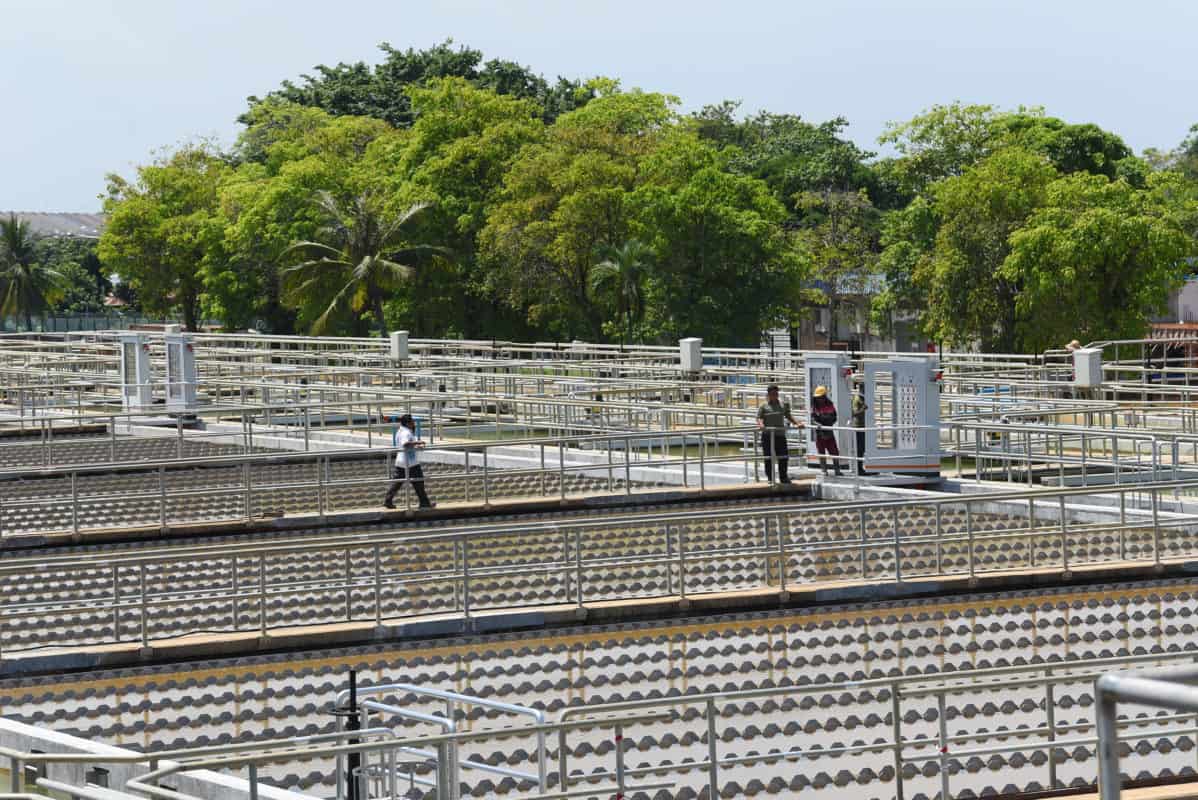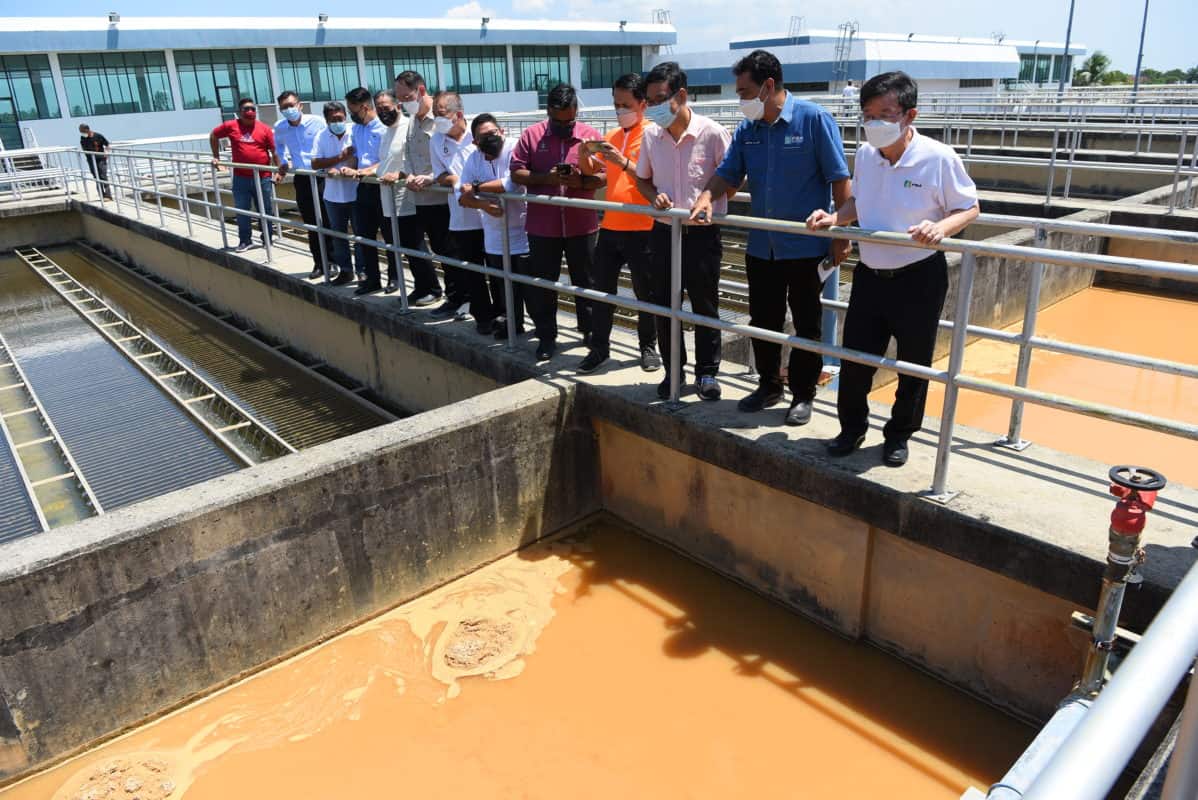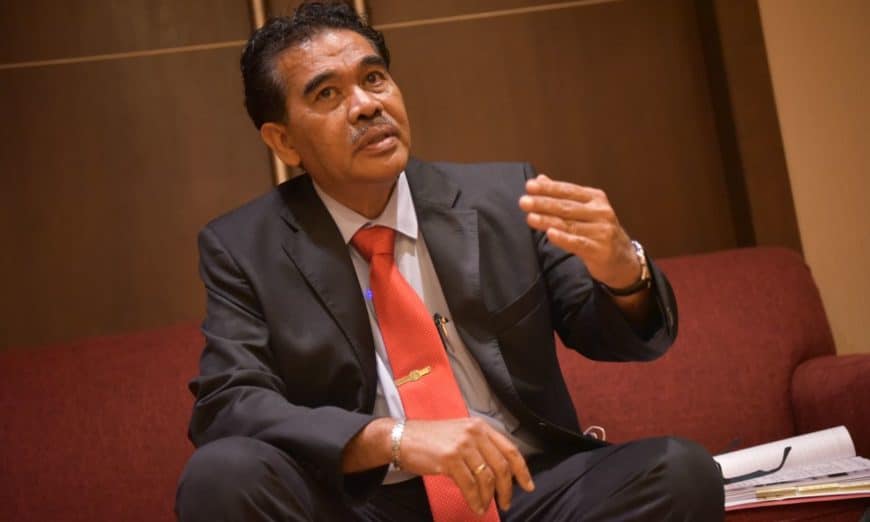ON July 4, the Baling flash flood at Kampung Iboi in Kupang, Kedah, was said to flow through Sungai Kupang into Sungai Ketil (one of the tributaries of Sungai Muda).
The next day, on July 5, the raw water quality from Sungai Muda was still acceptable and the Sungai Dua water treatment plant (WTP) was operating at 100% capacity.
However, at 6am on July 6, the turbidity of raw water from Sungai Muda reached an abnormally high level of 3,000 NTU (nephelometric turbidity units). The level was recorded as ‘unsafe’.
The normal turbidity of raw water from Sungai Muda should be below 1,000 NTU. NTU is used to measure the presence of suspended particles or matter in water.
Penang Water Supply Corporation (PBAPP) chief executive officer Datuk Jaseni Maidinsa recalled the fateful incident in which he had to declare an emergency.
In an exclusive interview, Jaseni said he had to activate the ‘Bilik Gerakan’ and the Water Crisis Team when the incident happened.
Tell us what happened when PBAPP first noticed the abnormally high level of turbidity of raw water from Sungai Muda?
Jaseni: There was no time to waste. We had our meetings. We have a Water Crisis Team, and we activated the ‘Bilik Gerakan’ to manage the crisis. Our Water Crisis Team met several times to strategise and come out with the best solution to manage the situation.
We did not plan or schedule the shutdown of the Sungai Dua WTP. When the turbidity of the raw water from the Sungai Muda was recorded as unsafe for two hours, a critical water engineering decision had to be made.
What are the measures taken?
Jaseni: I had to declare an emergency. A total of 415 PBAPP personnel from various departments, including me, had our annual leave approvals withdrawn. Nobody went on leave, and we had to cancel our Hari Raya Haji plans. The department involved were the operations team, the production team, the facilities team, the command centre team, and the corporate affairs team. All of us worked non-stop for six days to ensure that water consumers get their water as soon as possible.
We understand that water is a 24/7 utility in Penang.
Why did it take so long to notify the consumers?
Jaseni: The Sungai Dua WTP is the largest WTP in Malaysia. It can produce 1,228 million litres per day (MLD) of water. It is a massive treatment plant and if we need to shut down this massive treatment plant that is supplying about 80% of the raw water to Penang, we must plan properly.

In addition, we have 95 booster pumping stations to shut all over Penang. Before we shut the Sungai Dua WTP, we must shut the pumping stations, or the pumps will be damaged.
Why did it take so long to normalise the water supply in the state?
Jaseni: We have 59 treated water reservoirs and 42 water towers in Penang. They have to be filled with sufficient water before the pumping stations can be restarted to pump water to the consumers. Our operations teams have to check every pipeline that is supplying water to the 95 booster pumps to remove the ‘air lock’. About 4,696km of pipelines (100mm and above) have been laid to deliver water supply to about 660,000 registered water consumers in Penang.
Everything must be done systematically. The 95 pumping stations are under PBAPP excluding the private ones in gated condos and so on which have their own pumps. Some apartments do not have a full-time maintenance team to restart their pumps or manage technical problems, hence, PBAPP have to assist.
There were also incidences of burst pipes, and we have to isolate the area to conduct repair works. That also caused the delay.
How is the water from the Sungai Dua WTP distributed?
Jaseni: Water from the Sungai Dua WTP is transported through three submarine pipelines. We have to build up enough pressure for the water to reach the Bukit Dumbar pumping station. Once the suction pressure is sufficient, only then we can start the pump. If not, the pump will be damaged.
We have several critical pumping stations – the Bukit Dumbar pumping station, Bukit Minyak pumping station, Bukit Gedung pumping station and the Teluk Kumbar pumping station.
Once the Bukit Dumbar pump starts, it will then distribute water to the Bukit Gedung pumping station which then pushes water to Teluk Kumbar, Gertak Sanggul and so on.
Finally, the Teluk Kumbar pumping station pumps water to certain areas in Balik Pulau. The areas such as those near the Balik Pulau township, Jalan Bukit Penara, Balik Pulau bus terminal, Pondok Upeh, and Pulau Betong are the end-of-line (EOL) areas.
Water supply for affected consumers living on higher ground or EOL areas in Penang can only be normalised after the water supply is normalised in lower ground areas.
Other areas in Balik Pulau such as Titi Teras, Jalan Baru, Sungai Rusa, and Kuala Sungai Pinang do not depend on water from Sungai Muda and, therefore, the consumers there were not affected by the recent water disruption. The areas are supplied by the Sungai Pinang WTP and from the Teluk Bahang pumping station.
What is the role of the Air Itam Dam, Teluk Bahang Dam, and the Mengkuang Dam?
Jaseni: The water from the Air Itam Dam and Teluk Bahang Dam supply water to their respective areas. That was why areas such as in Pulau Tikus, Kebun Bunga, Tanjung Tokong, Tanjung Bungah, Batu Ferringhi, Teluk Bahang and some parts of Balik Pulau were not affected by the recent water disruption. The water supply in these areas is not from the Sungai Dua WTP, but from the respective dams.
The Sungai Dua WTP was shut down from 8am to noon on July 6. The water from the Mengkuang Dam was used to ‘dilute’ the high turbid raw water from entering the Sungai Dua WTP for us to restart the treatment plant early.

After we restart the Sungai Dua WTP, the pumping system pushed water from the plant to the Penang island and towards the south Seberang Perai. PBAPP did not ‘selectively’ pump water to any area following the incident. Treated water was pumped via an existing pipeline network with booster pumping stations. Pipeline configuration, proximity to major pipelines or booster pumping stations and elevation, and density of consumers and pipelines in an area are key factors for ‘normalisation’.
What are the immediate actions taken?
Jaseni: We sent water tankers and distributed bottled water via the state representatives (Aduns) when several areas such as Sungai Ara, Relau, some parts of Permatang Damar Laut and south of Seberang Perai were still without water.
This was the best way because the Aduns were getting feedback from the constituents as to who was still not having water. We passed the bottled water to the Aduns for them to distribute to the consumers while waiting for the water pressure to build up. Finally, at 11pm on July 11, the water supply for all of Penang’s 660,000 consumers has been normalised.
We thank all who had supported and helped during those trying times. We appreciate the kind understanding and patience of our water consumers.
Story by Christopher Tan
Pix by Adleena Rahayu Ahmad Radzi and Muhamad Amir Irsyad Omar

